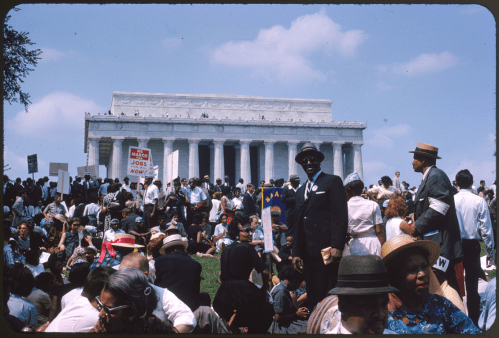Using his authority as president to address the United States’ outmoded immigration policies, Barack Obama announced sweeping executive actions on Thursday night to repair the “broken immigration system.” Among the administrative changes will be a shift of enforcement focus to serious criminals and security threats, and the opening of more avenues for high-skilled immigrants, graduates, and entrepreneurs to stay and contribute to the economy.
The third major set of actions—the ones that have generated the most passion and controversy —are a temporary fix for millions of immigrants living in the United States without legal status. These actions provide a shield from deportation and authorization to work legally. This initiative expands eligibility for the existing Deferred Action for Childhood Arrivals program, established by the Obama administration more than two years ago—to a larger number of young, undocumented people who arrived in the United States before the age of 16. More importantly it offers the same benefits to a new and larger group: parents of U.S. citizens or legal permanent residents who meet other eligibility guidelines. Some four million of the 11 million undocumented American residents will be able to apply for this new status, and it is aimed at those with deeper ties to the United States.
After several years of the highest deportation levels on record resulting in the separation of immigrant families, the actions taken by the president will prioritize the removal of serious threats and invest in the longer-term residents of U.S. communities who have been living in the shadows.
It’s been well over 20 years since there has been an overhaul of the U.S. immigration system and the president’s actions constitute a major refurbishment.
Pushed into action by a Congress unwilling to debate the white-hot political issue, executive action fixes some problems temporarily while creating others, specifically around the issue of deportation relief.
The first fix is that those who are approved for this status will no longer have to fear deportation.
Second, they will have legal authority to work. These immigrants will have more robust protection from employer abuse than they had as “underground” employees and may pursue new, higher paying job opportunities, contributing more to their community’s tax base.
Many of the potentially eligible immigrants have been living in the United States for years, and they also can participate more significantly in their neighborhoods and in their children’s schools and otherwise become stronger members of the communities they inhabit.
But the problems that the president’s executive action creates are major and at least three-fold.
The first is that the political maelstrom that has already begun will build as opponents lay out their lines of attack. Fixing the broken immigration system is complex, with some parts more controversial than others. Partisan politics may damage this good start toward repairing the immigration system, eroding immediate gains with harsher reforms down the line.
Second, these actions create the possibility that we will live with unfinished business for a long time—a policy that helps some but not all. The deeper challenge of integrating 11 million undocumented people who have economic, familial and social ties to U.S. communities and labour markets is deferred.
There is an economic reality that needs to be faced: immigrants and their offspring will constitute almost the entire growth of the U.S. labour force over the next several decades. The United States should be doing everything to ensure that the next generation – including the children of currently undocumented immigrants – is well prepared to carry the U.S. economy forward.
Finally, these actions could also be reversed by an incoming administration. That hazard may affect immigrants’ decisions to apply and expose themselves to immigration authorities; it also may affect hiring decisions by employers.
Thursday night’s announcement represents for many potential applicants the best chance they have had in years to work legally, and they will jump at the chance. For others, the opportunity comes with a big question mark hanging over it as they weigh the benefits and the risks.
It will be six months before these actions are implemented. I share the president’s wish that in the meantime Congress takes its own action and brings a reasonable bill forward for him to sign.
This commentary originally appeared in The Globe and Mail.


Commentary
Op-edObama’s Act Gives Hope to Four Million Immigrants, but More is Needed
November 21, 2014